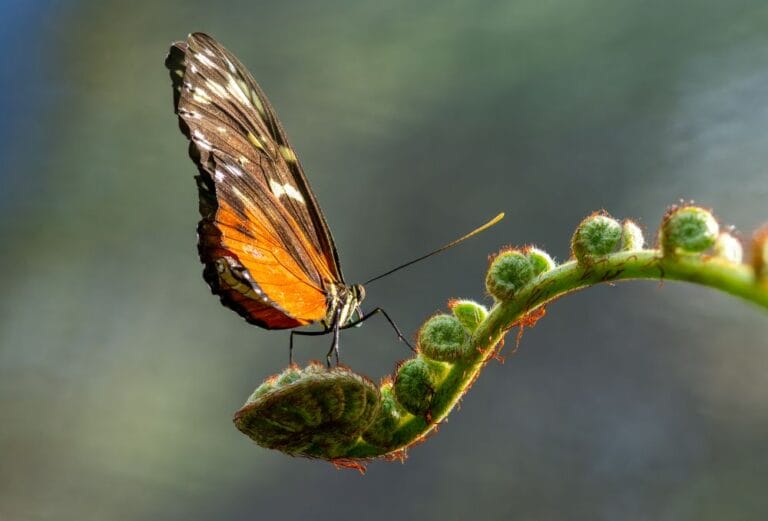Butterflies Alive! Invites You to See What Butterflies Need
- With wild populations in decline, butterflies need advocates now more than ever
- Exhibit runs May 24–September 1, 2025 in the Sprague Butterfly Pavilion
- Features about 1,000 live butterflies from over two dozen beautiful tropical species
- Requires $3 tickets in addition to Museum admission; tickets are free for Members
SANTA BARBARA, CA—A joyful and educational experience for all ages returns to Santa Barbara on May 24 as Butterflies Alive! reopens at Santa Barbara Museum of Natural History. Recently voted into the top three butterfly gardens in the nation by readers of USA Today, the Museum’s Sprague Butterfly Pavilion is a recurring summer favorite. As the abundance of wild butterflies declines, Museum staff and volunteers hope the happy encounters the exhibit facilitates with about 1,000 live butterflies sends visitors home with a meaningful message along with their good memories.
Recent research by experts from around the United States shows a 22% decline in the total abundance of butterflies across the country, looking at 554 species tracked between 2000 and 2020. Guests in the Museum’s pavilion won’t find signs with these gloomy statistics there, but they will be welcomed by staff and volunteers who are eager to inspire understanding and conservation.
Director of Guest Experience Kim Zsembik is proud of running an exhibit that speaks to butterflies’ moment of critical need with a light and hopeful touch. “Habitat loss is a key part of butterfly decline,” she says. “Our pavilion is an immersive habitat that can inspire everyone to protect wild habitats for butterflies everywhere, and create waystation habitats for migrating species like the Monarch.” Zsembik has volunteered as a regional coordinator of Western Monarch Count, helping fellow community scientists locate Monarch overwintering sites and estimate the number of butterflies found there. The U.S. Fish & Wildlife Service has proposed to list the Monarch as a threatened species for protection under the Endangered Species Act.
“Inside our exhibit, you can see how butterflies rely on the natural environment,” says Zsembik. Although the butterflies that populate the exhibit are farm-raised, they engage in natural wild behaviors, so Sprague Butterfly Pavilion contains everything the two-dozen-plus species exhibited need to live comfortably. “They all need to bask in the sun to keep warm,” explains Zsembik. “Some species need flowers to feed on nectar, while others need rotting fruit. Males suck up minerals from mud puddles, for use in reproduction. And most of them roost—or rest—in the trees and shrubs here.” Seeing these behaviors up close, it’s easier to visualize how butterfly populations have been affected by habitat loss, pesticides, and climate change.
The only need you won’t find this self-contained habitat supporting is host plants for the growth of caterpillars, since the exhibit is not permitted to breed butterflies. To protect local wildlife and agriculture, the farm-raised butterflies must stay inside for the duration of their relatively brief lives. Nevertheless, they naturally mate with each other, leading to lots of conversations with guests about what species need to reproduce and sustain populations in the wild.
The exhibit requires $3 tickets in addition to regular Museum admission. Both regular admission and pavilion tickets are free for Museum Members. For more information, visit sbnature.org/butterfliesalive.
###
About the Santa Barbara Museum of Natural History
Powered by Science. Inspired by Nature. Founded in 1916, the Santa Barbara Museum of Natural History inspires a thirst for discovery and a passion for the natural world. The Museum seeks to connect people to nature for the betterment of both, and prides itself on being naturally different. For more information, visit sbnature.org.


Leave a Response